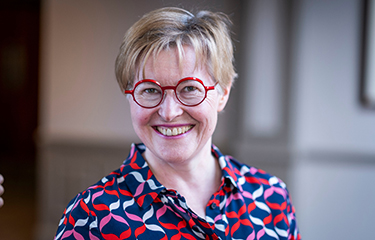Heather Jones is the CEO of Scotland’s Sustainable Aquaculture Innovation Centre (SAIC).
Over the past 12 months, uncertainty in the form of inflation, energy prices and the cost-of-living crisis have brought the need for change into focus across many sectors. For aquaculture the collective goal of sustainability and future-proofing remains top of the agenda.
With high salmon prices per kilogram throughout 2022, we hope this will unlock further investment to fuel innovation and research next year. Local, national, and international cooperation and collaboration will be central to this, with global action needed to help tackle some of the challenges faced across all seafood producing nations.
Seafood and finfish farming continues to play an integral role in the world’s food system, providing a high-quality, sustainable source of protein while supporting economies and rural communities. As we look ahead to the new year, there are three key areas which we expect will shape the direction of travel for producers, the supply chain, academics, and public bodies with an interest in Scottish aquaculture.
1. Mitigation of natural threats
Warmer waters causing algal, plant, or zooplankton blooms has been one of the biggest emerging challenges this year, and global warming makes it an ongoing concern. Harmful blooms can impact all animals and plants in the natural ecosystem – not just seafood – but we want to further support the sector with developing new tools and systems to better understand these threats.
Early-warning technology, as well as increased knowledge to help spot trends and patterns, will enable seafood farmers to respond as quickly as possible to protect the health and welfare of their fish. Upskilling is also key to this across all areas of the sector. If more people are trained to look for patterns, the more likely we are to be able to introduce measures at the right time to deal with the potential impact.
2. Putting technology developments into action
We know that a progressive, modern mindset is needed to help future-proof the sector. Emerging technology and the greater use of data has been on the agenda for some time, but in 2023 we have the opportunity to shift from development to adoption.
SAIC has supported innovation projects over the year covering a range of areas, from the environment to fish health. Next year we want to see the knowledge gained through research being applied by all involved in seafood production – including regulators. Examples like Tritonia’s 3D mapping of the hard-to-reach seabed can provide an extra level of confidence and reassurance when it comes to the environmental impact of fish farming.
3. Connecting the dots between government strategies
In spring 2022, the Scottish government published its Blue Economy Vision for Scotland and, in the first quarter of 2023, we expect to see a new Vision for Aquaculture as well as a new Innovation Strategy. Proposals for highly protected marine areas are also out for consultation.
All of these provide a framework for Scotland’s future, but we also need government to join up the dots between each strategy and work with the sector to create a thriving economy.
A good example of where this has worked before is the blue economy. Scotland’s energy sector has modernized in a big way, transitioning to renewable tidal and wind-powered energy source. We should see seafood see seafood in the same way – moving from the old ways of doing things, catching wild fish, to cultivating the sea the same way we have the land through modern agricultural practices.
Scotland’s geography, natural resources, expertise and history of innovation are all at play within aquaculture and, next year, we can be at the forefront of sustainable economic development in line with the government’s ambitions.
Photo courtesy of SAIC






